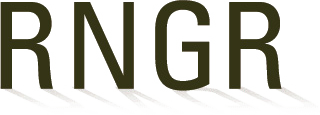
Arundinaria (gigantea)
|
Gregory Hoss Nursery Manager George O. White State Forest Nursery PO Box 119 Licking, Missouri 65542-0119 573-674-3229 GIF-native-plants@prodigy.net |
| Family Scientific Name: | Poaceae | ||
|---|---|---|---|
| Family Common Name: | Grass Family | ||
| Scientific Name: | Arundinaria gigantea (Walt.) Muhl. gigantea | ||
| Common Name: | Giant cane | ||
| Species Code: | ARUGIG | ||
| Ecotype: | South Central Missouri | ||
| General Distribution: | Giant cane is found from Ohio, Indiana, Illinois, Missouri and Oklahoma to North Carolina, Florida and Texas; mostly above the coastal plain. It forms dense stands in low and swampy woods, moist meadows and along river banks. Our vegetative propagule collection is from south central Missouri. | ||
| Propagation Goal: | cuttings | ||
| Propagation Method: | vegetative | ||
| ProductType: | Bareroot (field grown) | ||
| Stock Type: | 1+0 | ||
| Time To Grow: | 1 Years | ||
| Target Specifications: | Height: N/A<br> Caliper:N/A<br> Root System: Root system must balance top growth. | ||
| Propagule Collection: |
Rhizomes were collected from natural stands. Rhizomes must have an active shoot present or they fail to establish. We have found that collecting and planting dense clumps of rhizomes, rather than single rhizomes, results in quicker nursery-environment establishment and more propagules. |
||
| Propagule Processing: | Rhizomes and clumps were planted into prepared field beds immediatley after collection. | ||
| Pre-Planting Treatments: | None. | ||
| Growing Area Preparation/ Annual Practices for Perennial Crops: |
Soils: Our field soils are silty clay loams. The spring before planting, we amend the soils with 700 lbs/acre of 1N:3 P205:5K20, grow a soybean cover crop, and fumigate in the fall. We use Roundup Ready soybeans so we can control weeds by using glycosate herbicide without harming the cover crop. During early August, we disk under the cover crop and disk the soils several times during the next 6 weeks to obtain a smooth soil surface. Soils are fumigated in late September. Field Bed Preparation: We mark out and form beds as needed. Beds are prepared with a rototiller/seedbed former and are typically 4 to 6 inches high and 4 ft wide. Fields are cultivated for weeds as needed throughout the growing season. Irrigation: We use overhead irrigation with two inch pvc pipe that can be moved from field to field each year. Our principle water source is from 3 on-site wells and is very good quality water. |
||
| Establishment Phase: |
Rhizomes are covered and irrigated when soils appear to be drying out on warm days. We apply old sawdust and hydromulch after planting. Single rhizomes take 2 years to establish, whereas clumps will establish the first year and generate more rhizomes and shoots. |
||
| Length of Establishment Phase: | 1-2 years | ||
| Active Growth Phase: |
Year 1: Fertilization: We apply ammoniumsulfate 21-0-0-24 with a mechanical spreader. We put on the first application the last week of May and to only those plants that have been established for at least 5 or 6 weeks. We put down our last application during the last week of July. We apply fertilizer at the rate of 125 lbs/acre. Frequency of application depends on the species and how they look that season. We irrigate for at least 45 minutes following all fertilizer applications. This insures that foliage will not burn and incorporates fertilizer into the root zone. It is very important not to top prune Giant Cane. Topping results in slow establishment and less growth in the nursery. |
||
| Length of Active Growth Phase: | 5 months | ||
| Hardening Phase: | Hardening begins during August. No fertilizer is applied after August. | ||
| Length of Hardening Phase: | 2-3 months | ||
| Harvesting, Storage and Shipping: | Rhizomes and clumps are lifted as needed during spring months. We do not hold these propagules in cooler storage. | ||
| Length of Storage: | None | ||
Citation:
Hoss, Gregory. 2005. Propagation protocol for production of Bareroot (field grown) Arundinaria gigantea (Walt.) Muhl. cuttings 1+0; George O. White State Forest Nursery Licking, Missouri. In: Native Plant Network. URL: https://NativePlantNetwork.org (accessed 2025/10/29). US Department of Agriculture, Forest Service, National Center for Reforestation, Nurseries, and Genetic Resources.



